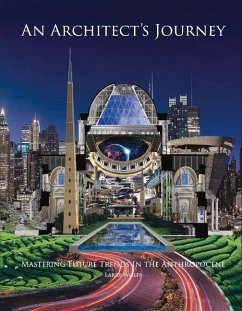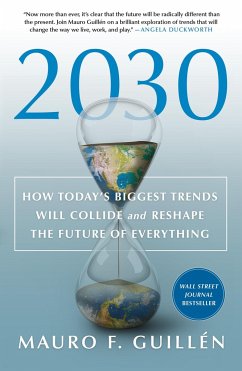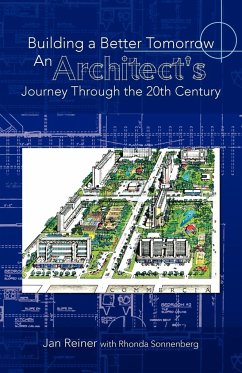
An Architect's Journey: Mastering Future Trends in the Anthropocene
Versandkostenfrei!
Versandfertig in über 4 Wochen
106,99 €
inkl. MwSt.
Weitere Ausgaben:

PAYBACK Punkte
53 °P sammeln!
An Architect's Journey - Mastering Future Trends in the Anthropocene is a journey into the future of architecture and mastering the Anthropocene's dangerous forces. The book demonstrates how architects and building professionals can lead the way to overcome climate change and the related perils of the Anthropocene by mastering future trends in the design domain. Captivating narratives show how architects can shift their emphasis from aesthetic object-making to meaningful and extraordinary achievement by understanding society's needs and expectations as they critically address the book's thesis...
An Architect's Journey - Mastering Future Trends in the Anthropocene is a journey into the future of architecture and mastering the Anthropocene's dangerous forces. The book demonstrates how architects and building professionals can lead the way to overcome climate change and the related perils of the Anthropocene by mastering future trends in the design domain. Captivating narratives show how architects can shift their emphasis from aesthetic object-making to meaningful and extraordinary achievement by understanding society's needs and expectations as they critically address the book's thesis. "Can architecture shift from its resource-consumptive nature to become a productive, regenerative project that supports urban agriculture and reforestation, serves as a potable water source, produces net positive renewable energy, captures carbon, recycles and converts waste streams into usable materials, while allowing unlimited opportunities for developing new architectural forms and features that increase human and environmental performance without sacrifice to artistic expression and creative experimentation?" An Architect's Journey provides new tools, methods, and strategies necessary to make architecture vitally more significant and instructs readers how to apply more aggressive sustainable practices to their work while achieving new modes of artistic expression. The future directions defining the next few decades support a long-range forecast of unlimited opportunity mixed with turbulence, uncertainty, and peril. To succeed, architects and building professionals must strive for positions of leadership, contradict the status quo, expand conventional thinking, behave un-conventionally, abandon exclusive theories, innovate from a framework of multiple perspectives, and skillfully navigate the consequences of difficult choices and actions through informed, collaborative, and integrated practices as forecast by An Architect's Journey.












